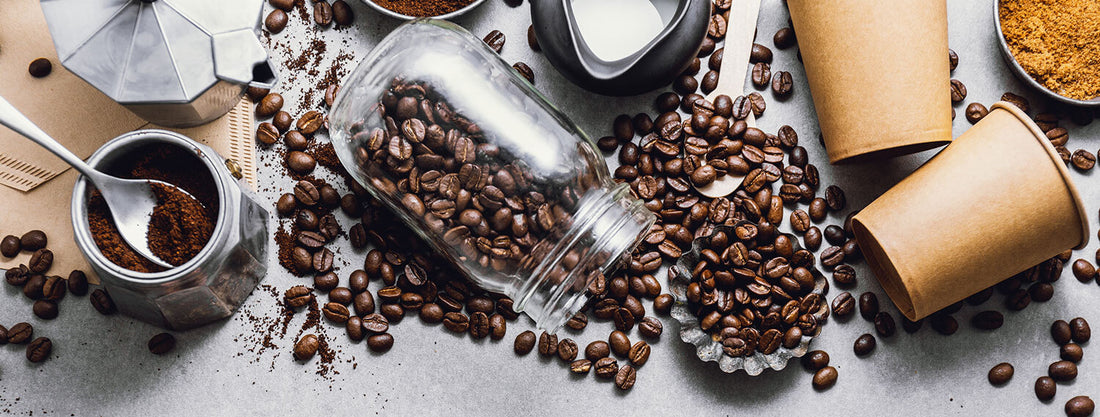What are the different coffee and what exactly is brewing coffee?
Lianne Moreno
The preparation of coffee may vary between cultures, individuals, and countries. Since the discovery of coffee around the fifteenth century, it has been prepared from roasted coffee beans extraction. Over time its popularity spread around the globe as one of the popular beverages of modern society. However, during this period, plenty of brewing and extraction methods for coffee have been introduced.
Let's get to know about the most common of these methods below:
How do coffee grinds work?
Making a better cup of coffee at home requires spending a little extra time on few steps. These include:
- Correct water temperature
- Grinding your beans
- Flow of the water
Out of all these steps, grinding coffee beans is the most important. It is because grind size can change your coffee's taste dramatically. In coffee grinding, the essential factors that can make the most significant impact are:
- Extraction rate
- Contact time
- Flow rate
Let's put things simple:
- Coffee grounds extraction rate increases with the larger surface area
- To increase a the surface area one must use a finer grind of coffee
- With a higher extraction rate, less contact time will be required
- A fine grind can effectively reduce the water flow rate. Consequently, it will increase the contact time
According to this, the finer the grind of coffee the less the contact time needed to extract a flavorful cup of coffee.
Coffee Brewing
So, we are having good coffee grinds and good water, now all you need to do is brew up a coffee cup. However, in every method to prepare a cup of coffee, the general principle is the same.
- Take your roasted beans.
- Grind these into small pieces.
- And then add water.
When the water hits coffee grinds, it will start extracting flavor compounds. Regardless of the brewing method you are using; water is always going to extract various flavor compounds in the following order:
- Fats and acids
- Sugar
- Plant fiber
However, from the perspective of flavor and body, it will look like this:
- Sour-Oily
- Syrupy-Sweet
- Thin-bitter
Different methods of coffee brewing:
Here are some of the most common coffee brewing methods are explained:
Espresso (Fine)
Brewing time: up to 30 seconds
Espresso is the fastest coffee brewing method. Therefore, the consistency of coffee grinds must be fine, just like table salt powder.
As the process is the fastest, thin grinds require to cover as many surfaces as possible. Pressurized hot water will move through fine coffee grinds to extract a strong flavor.
However, if you will take longer, then it will extract the bitter flavors of the bean.
Shop Coffee for EspressoMoka Pot Grind (medium-fine)
Brewing Time: 5 to 7 minutes
The coffee grinds in this will be a bit thicker than espresso, as it will take a few minutes to heat water and to start the process. Once pressure is built, the extraction will be quick. As the pressure is created from water heat, it won't have as much strength as an espresso machine.
That's why it is needed to be a bit thicker than espresso to allow more comfortable water to flow through the coffee compartment. At the same time, grinds must be thin enough to cover the right surface area as well.
Shop Coffee for Moka PotDrip (medium)
Brewing Time: 4 to 5 minutes
In this extracting method, coffee beans must be in table salt like medium grinds. Even though the water in this method flows through the filter basket, however, using gravity to pull it through mostly. Therefore, you must grind coffee beans to offer enough space for water to flow through them.
The constant flow will push the water through coffee always. To avoid over-extraction, you must keep coffee grinds a bit larger.
Shop Coffee for DripPour Over (medium-coarse)
Brewing time: 4 to 6 minutes
In pour-over, medium-coarse coffee grinds are being used. Water will flow through coffee grinds via gravity, but water flow won't be consistent here. That's why the coffee grinds have to be coarser for better flow and let the water take their time without over extracting the coffee beans.
Shop Coffee for Pour OverFrench Press (coarse)
Brewing time: 3 to 5 minutes
French Press brewing method uses coffee grinds in chunks or thick coarse. Water has to sit full time before separation in this brewing method. Therefore, the grinds have to be coarse to let the water cover the surface area slowly. Coarse or chunky grounds will also offer an easy coffee brews separation from the grinded beans without letting them go in the final coffee.
Shop Coffee for French PressCold Brew (coarse)
Brewing time: 12 to 24 hours.
Cold-brew is commonly in the form of chunks or thick coarse. Cold brew coffee is refreshing and crisp.
Just like French Press, this coffee brew requires to be coarse because it has to be submerged in water for longer. However, it will take a longer extraction time, as this brew will remove the water heat. Room temperature water is used in this extraction method. Even it has to stay at room temperature until the desired brewing strength is achieved.
So here, you certainly have gotten a better idea of coffee grinds and multiple extraction methods.
Shop Coffee for Cold Brew


